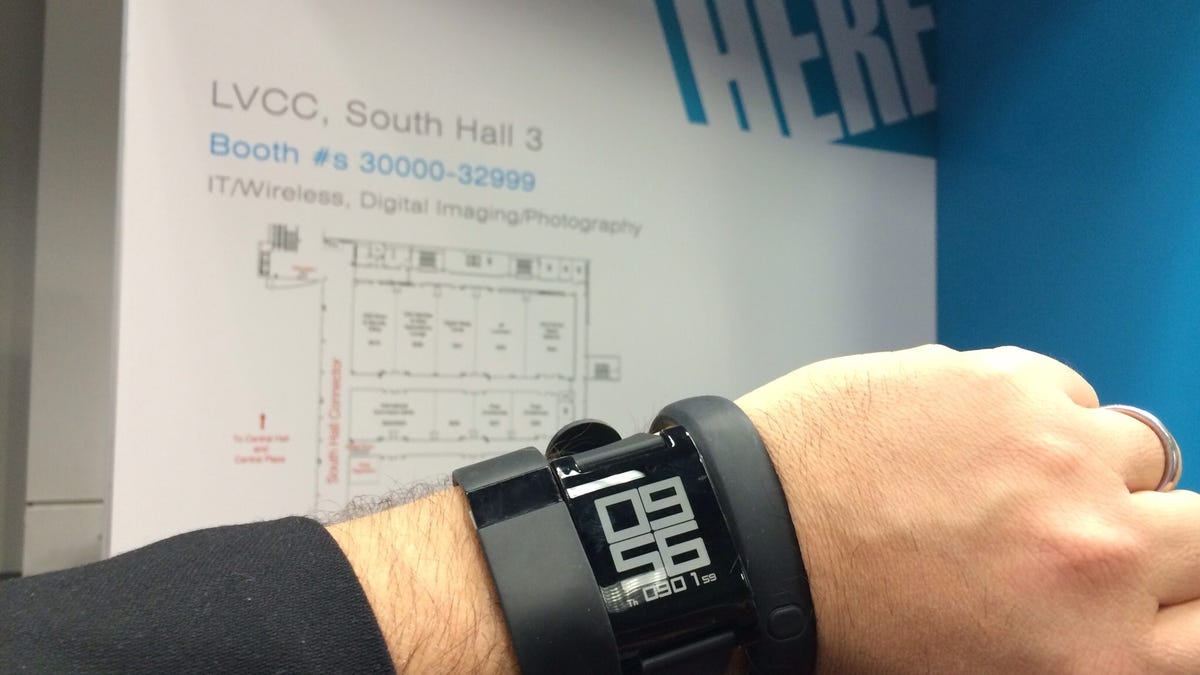Wearable tech: Get your apps together
If wearable tech's going to succeed, it can't feel this disconnected. We need a clear voice in the madness, and it's likely to come from Apple and Google.

We only have four limbs, one head, two eyes, two ears, and so much patience. Wearable tech, the buzzword that keeps accelerating and gathering storm clouds all throughout this year's CES, carries the whiff of promise, of future, of something new. That's why companies are pursuing it, really: in an industry where most major electronics categories are becoming commodified, wearable tech is experimental. It's new. It's something to talk about, and to stop and see. But in the real world, people can only afford so many gadgets, and don't have the time to learn to use all of them.
There's the rub. Wearable tech is so fragmented, with so many ideas and separate apps and services, that there's no way every part can survive unless some standards and synchronicity are upheld.
Lots of wearable tech can be incredibly exciting...for a spell. Google Glass is a great afternoon's thrill ride. Smartwatches are fun to show off. But where all of this will settle is unclear. And that's not a problem at all for the evolution of technology in general, but for a raft of companies that are increasingly placing larger bets on the space with platforms of their own, it's a risky world that could boom or bust. I can already see repeated patterns in wearable tech, but little actual intersection. Most fitness gadgets don't share data with each other. Some watches are glued to certain phones. Wearable tech is like a world of living apps, but apps are cheap and don't take up space. Like I said, we only have so many limbs, and so much patience.
I got dressed for CES and picked from an increasingly growing menagerie of wearable devices I'd take with me. Pebble on one wrist, Nike+ FuelBand SE and Fitbit Force on the other. Ridiculous. I know. Those fitness trackers are redundant. I'm testing them out simultaneously, but also, honestly, there isn't one wrist device that wins out over the other. They each have advantages. I don't have an iPhone or Nexus 5 for my wrist, something that earns its place and can't be removed. Honestly, the Pebble comes close, but it lacks fitness apps or sleep-tracking, which is what I wear those other devices for.
How many wristbands can I wear? Brian Bennett, who also reviews these gadgets, does the same thing: stacked up, like bangles. It's amusing and helpful for cross-testing, but it underlines the point: one doesn't win out yet. And as for Google Glass, I don't wear it. The battery life is too short, the device too fragile and cumbersome, and the actual uses for it too few.
Wearable tech is fun because anyone, seemingly, can invoke it. Are you a fitness company, or a computer manufacturer, or a cellphone maker, or a display maker? Wearable tech isn't out of reach, because it covers so many different subcategories: glasses, cameras, watches, wristbands. Or maybe you've got a foot in several of these worlds. Wearable tech can be the Great Glue of the future, a place where, maybe, various different divisions can be united.
In the last few years, that glue was "the cloud." And it still is. The Internet, and all its myriad services, can connect devices and create something seamless. No big surprise: we're already there with our phones, laptops, smart TVs, and tablets.
Wearable tech, in that sense, is really a Trojan horse. It's just a way to find other little products that can let that vast interconnected world spread to even smaller channels, so that everything, in the end, is interconnected. The much-despised (at least, by me) term "Internet of things" refers to exactly that. And what better way to knit gadgets together than with gadgets you always wear on you?
But wait: how does that happen? And do we need it? Wearable tech isn't just one idea. It's hundreds, all ranging from the mundane to the insane. It's a wide-open think tank for the industry. And now that sensors and processors and batteries are cheaper, more flexible, it's easier for a lot more companies to experiment.
Who knows whether what we saw at this year's CES will even be relevant in six months, when notably larger and absent companies like Apple and Google transform this landscape even further. But these small companies aren't disposable: in fact, some of the next titans of tech will probably bubble up from this primordial soup. It's like dot-com companies. Some will fail, some will rule the world.
Knowing which ones will succeed or fail is the challenge. In a world of free apps and Web services like Twitter and Facebook, you can try them all without losing. But these little devices cost money, they're not free. And they're not as commodified, or as useful, as the more boring but far more essential laptops, tablets, PCs, phones, and TVs of the world.
Catch CNET's complete coverage of CES 2014
So what I'm saying is, there's no way to tell what this CES means for wearable tech. It's one more fascinating leap, but what we need next is clarity.
We need unification. We need an Android of wearable tech, or an iOS, or a Windows, to knit together the devices under one tree. Lots of variation, but working to a common goal. Imagine 70 tablets that all did their own thing and didn't work with each others' software: that's wearable tech right now, and that has to change. Otherwise, how will I know what to put on my wrist?
Because right now, I have no idea.

